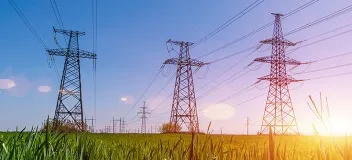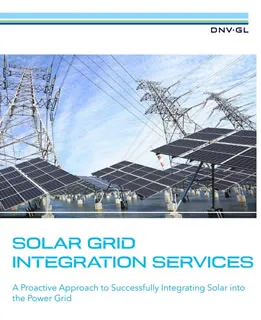Requirements for generators
Do you comply with the requirements for generators?
Modern photovoltaic (PV) power plants and their inverters need to support the electrical grid during electrical faults in the system and normal operation. It is a requirement by theConnection Network Codes (CNCs) - that any equipment connected to the system is compliant with the technical requirements outlined in the CNCs from the moment it’s fconnected and throughout its life.
In April 2016, the European Commission issued new regulations that establish the network code on requirements for grid connection of generators (RfG). The connection requirements set out in this Regulation apply to new power-generating installations. The European Requirements for Generators officially entered force on the 17th of May 2018. Please note: customized requirements may apply to the individual member states as well as dates of enforcement. Contact us if you have questions.
Requirements for generators - Europe
The Network Code on Requirements for Generators (RfG) is harmonising standards that generators must respect to connect to the grid. These harmonised standards (across Europe) are meant to boost the market of generation technology and increase competitiveness. With the huge ambitions in the installation of wind and solar farms, it is essential to have a fast, smooth and reliable process in place to meet requests for grid connections.
Why these rules?
With increasing renewable penetration levels, these rules:
- Help grid operators and traders to collaborate to transport electricity across Europe's borders
- Help grid operators to keep the grid stable
- Describes the requirements that have to be met by users and producers of electricity
Creates a fair playing field for manufacturers (uniformity technical requirements)Article 7 (4) requires that the relevant national system operator or TSO shall submit a proposal for requirements of general application, or the methodology used to calculate or establish them, for approval by the competent entity within two years of entry into force of this European Regulation. This means that it should have been in place since May 2018. Some countries have asked for postponement. Make sure you check the specific national situation.
DNV has extensive experience with both the development of grid codes, for regulators, governments, TSOs and DSOs and compliance checking of solar, wind and other power plants. In technical due diligence assignments, we regularly review RfG compliance.
RfG compliance
DNV can help solar and wind developers (and any other type of power plant) achieve RfG compliance without having to invest in detailed in-house knowledge.
As a solar/wind developer, you are required to show compliance that requirements are met. These requirements apply to all solar power facilities that are interconnected to the bulk power system.
The requirements are quite complex, but non-compliance can result in financial penalties or even refusal of energization of a grid connection. Moreover, regulators and consumers expect grid reliability, so you may also risk damage to your reputation and economic penalties from grid failures caused by your systems.
DNV can help you ensure your facilities become compliant without you having to invest in detailed in-house knowledge. Our consultants have extensive experience with solar and wind developers, grid codes and innovative grid integration services. They can draw on this knowledge to support you in a full range of compliance-related activities:
- Compliance Testing (CT) – verification of the availability of the minimum required functionality and parameter ranges.
- Compliance Simulation (CS) – simulated verification of the availability of the minimum required functionality and parameter ranges especially where testing is not applicable or risk of damaging the facility.
- Compliance Monitoring (CM) - verification the availability of the minimum required functionality and parameter ranges still exist. This activity is an on-going activity throughout the life of the facility.
Check with your national regulator/authority for the national system (production unit structure) or contact DNV for further information
RfG and grid operators
DNV also supports grids operators not only with the design of RfG related processes but also applies its independent expertise in the verification of documentation, verification of tests and simulations (and its models).
Technical requirements in RfG are arranged in four types A-D based on the connection voltage and MW capacity. Type A and B requirements are close to a product standard; type C and D requirements need active generator management.
- Type A - A basic level necessary to ensure capability of generation over operational ranges. It has limited automated response and minimal system operator control.
- Type B - Type B provides for a wider range of automated dynamic response, with greater resilience to more specific operational events
- Type C - Provide for a refined, stable and highly controllable (real-time) dynamic response, aiming to provide principle ancillary services to ensure security of supply.
- Type D - Requirements specific to higher voltage connected generation with an impact on entire system control and operation. They ensure the stable operation of the interconnected network, allowing the use of ancillary services from generation Europe-wide.
B, C and D power-generating modules must be approved by the relevant regulatory authority.



